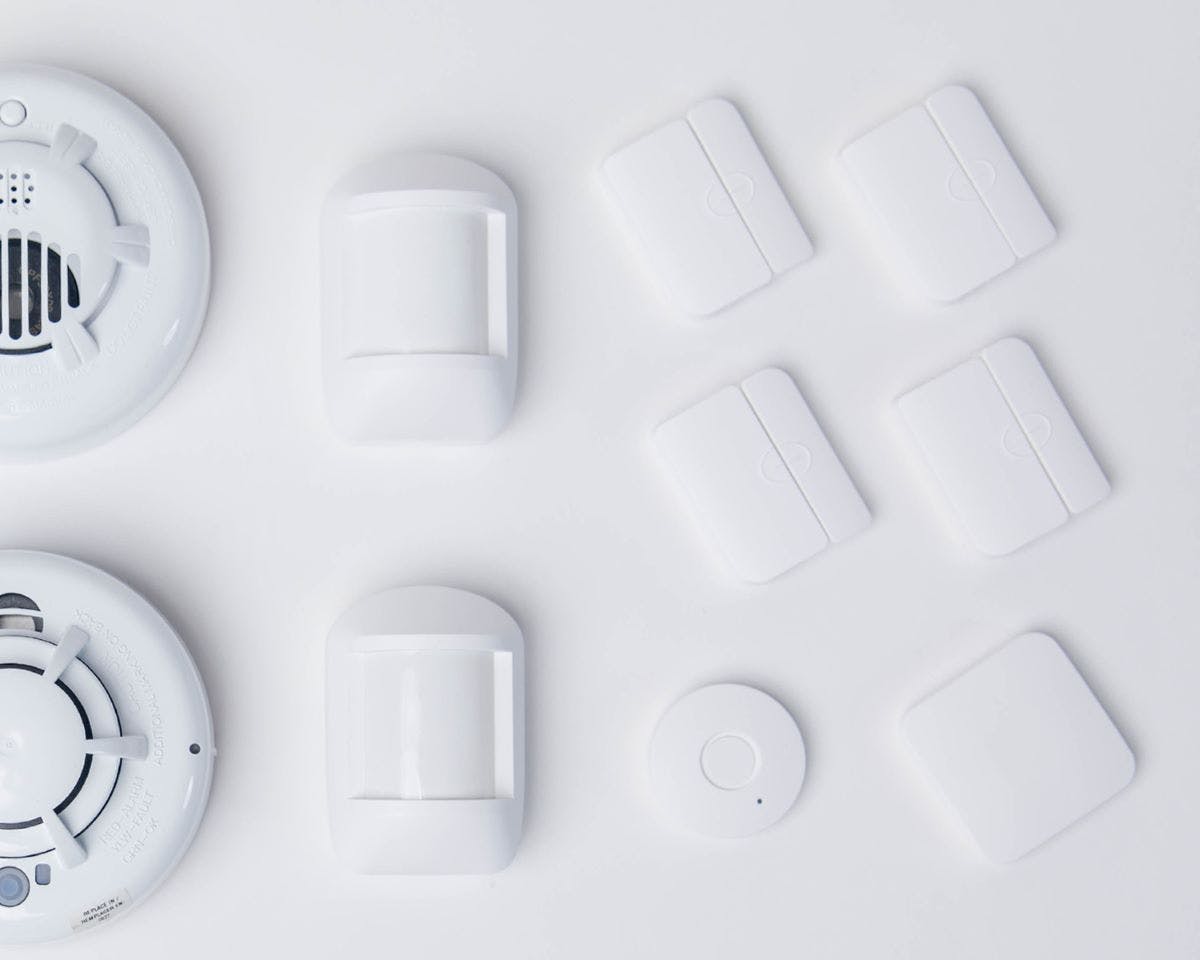
The number of homeowners who have home security systems has nearly tripled in the past few years. Studies have shown that homes with home security systems are significantly less likely to become victims of burglary. But even after considering that fact, is it worth it to have a home security system? Some might say yes, while others could disagree about the benefits of having alarm systems. To help set the record straight, we have gathered all of the information on the web to find out whether home security systems are worth it.
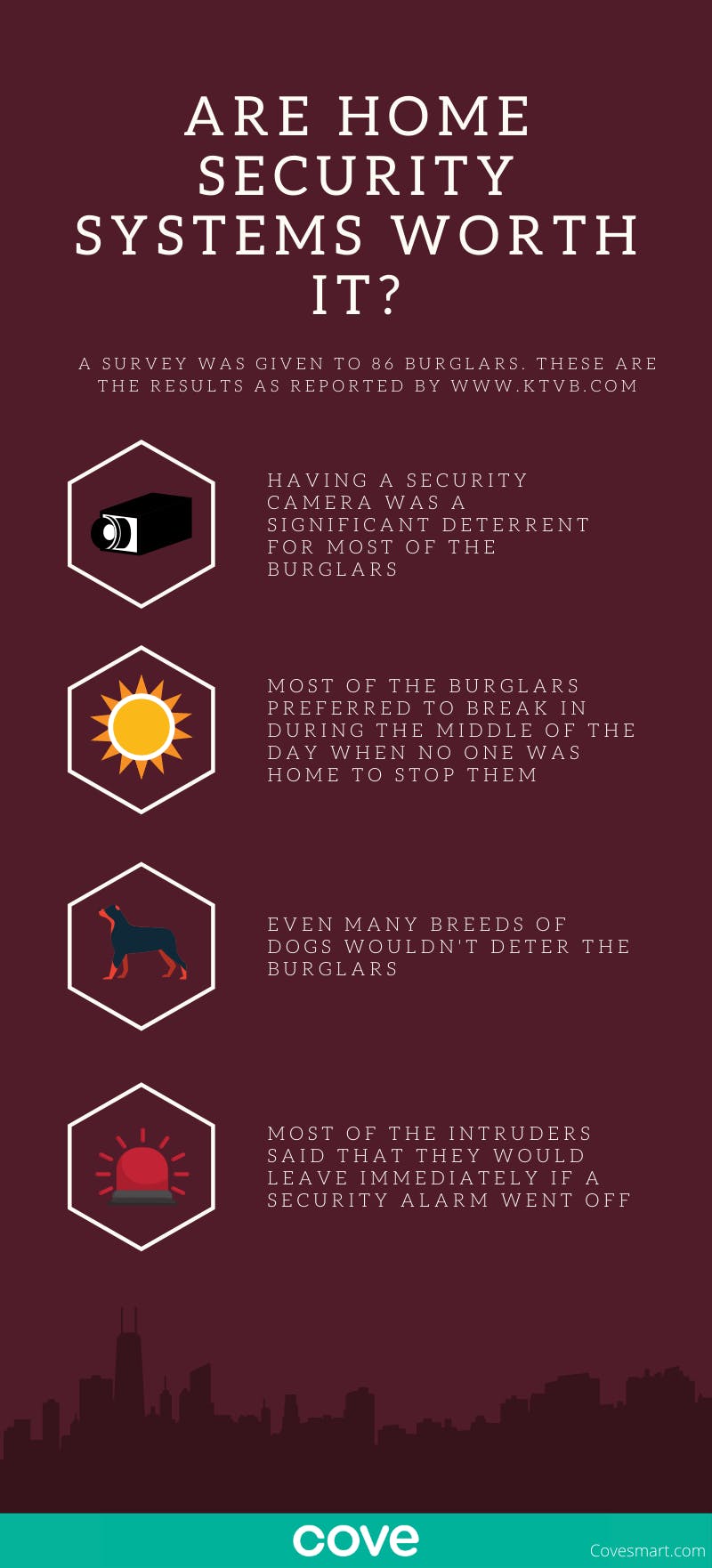
Will a Home Security System Protect You?
First of all, will a home security system actually protect you? Will burglars actually be deterred by an alarm? Yes, and yes. Home security systems are meant to protect your family. That’s why they include more than just a basic lock for your door. They include motion detectors, security cameras, professional installation or DIY installation, door and window sensors, smart smoke detectors, glass-break sensors, two-way audio, cellular backup, control panels, and more. With that list, we only scratched the surface of how a security system’s features can protect you. Home security features are meant to be combined to give you a well-rounded system that protects the homeowner and the homeowner’s family.
An Idaho news station asked 86 convicted burglars how the burglars break into homes. One of the questions specifically mentioned security systems. The question was, “If a home alarm system went off, what would you do?” Almost all of the burglars said that they would run at the first sound of an alarm. Burglars today know that most alarms have remote monitoring or professional monitoring.
https://ktvb.com/embeds/video/277-2410553/iframe
With professional monitoring, the alarm company will check the cameras for intruders as soon as the alarm is triggered. Professional monitoring gives the homeowners the upper hand since someone is always watching the home. Even if the burglars were able to reset the alarm, the alarm would have already been sent to the police, and the police would be on their way. If the homeowner doesn’t have professional monitoring, it is still likely that the alarm is remotely monitored by the home or business owner. If that’s the case, the homeowner will get the immediate notification that the alarm was triggered. That’s why when the alarm goes off, an intruder’s best chance is to run without ever entering the home.
The whole point of having an alarm security system is to prevent your home from being broken into. When an alarm is set off (whether it’s from the door sensors, security cameras, the garage door sensor, or any other home security equipment), the burglar needs to get out. Most sensors are placed on the outside of the home. If not, the sensor is placed on the opening to the outside such as a door or window. With a door alarm, as soon as the door is opened, the alarm is triggered. When the alarm is triggered, the burglars run off.
Even with security cameras, doorbell cameras, and smart locks, there’s still more that home security systems can do. A smart system protects you from the threats that can come from inside your home as well. Home security systems can protect your home from fire, carbon monoxide, and flooding.

One way that a smart system protects you is through smart smoke alarms. Smart smoke alarms are made to connect with a mobile app on your smart devices (phone or tablet). If the smoke alarm is triggered while you’re away from home, you will be notified on your smart device, giving you a headstart in calling the fire department before it’s too late. Sadly, one out of four people will have their home burn down at least once in their lifetime. Although some fires can not be predicted or prevented (such as wildfires), many house fires are preventable.
The number one reason for house fires is unattended cooking. This includes people who leave the burner and stove on as they leave the house or people who leave food cooking and run to do an errand. These fires are completely preventable. Typically these fires cause severe damage because they are noticed too late. If the fire is visible from the neighbor’s house, the fire has already caused severe damage. Instead, catch fires before they cause too much damage with smart smoke alarms.
In short, home security systems can protect your home in a variety of ways. They are one of the most versatile systems that you can have in your home. From burglary protection to fire protection, home security systems will bring homeowners peace of mind.
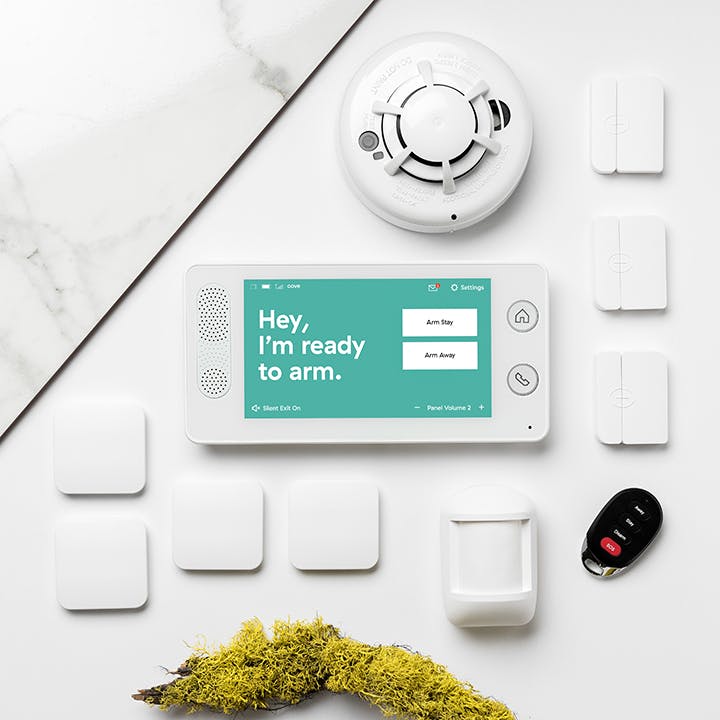
What is Included in a Home Security System?
Home security systems can include a wide variety of devices. Each device is meant for a different purpose. As we mentioned, smart smoke detectors help detect fires before the fire does irreversible damage to your home. Other devices, such as indoor security cameras, are more versatile, and can protect your home from burglary or act as a pet camera to watch mischievous pets while you’re away from home. Some systems even have indoor two-way audio cameras that make great baby monitors. Most home security systems will include a wide range of equipment that will protect every square inch of your home.

Securing the Doors With Door Sensors
A door sensor is a small device that functions as your main defense against intruders. Essentially, door sensors let the homeowner know when someone has entered the home. If the system is armed, the door sensor will let off a piercing alert that is meant to scare away intruders.
Most door sensors are made up of two components. One part is fastened to the door itself, and the other is connected to the door frame. The two parts should, when the door is closed, align and connect. The alignment creates a current of electricity. When the two parts disconnect, such as when a door is opened, the electrical current is broken and the alarm is triggered. Door sensors and door alarms typically use reed switches and magnets to determine whether the door is open or closed.
Most door sensors are incredibly easy to install. Wireless door sensors can be installed using an non-intrusive adhesive or the sensor can be screwed onto the door. Either way, most door sensors can be installed independently, meaning that you won’t need to call up a professional installation team to install the door sensor. Instead of paying money for a professional installation, the DIY setup of the door sensor is easy, and uncomplicated. Most customers boast that they can install the door sensor in under 10 minutes. DIY door sensors save you time, effort, and money.
Door sensors are an essential part of home security because they guard your doors. No one can get in or out of the home without triggering the door sensor when the security system is armed. This created an effective defense against possible intruders (or against teenagers trying to sneak out at night).
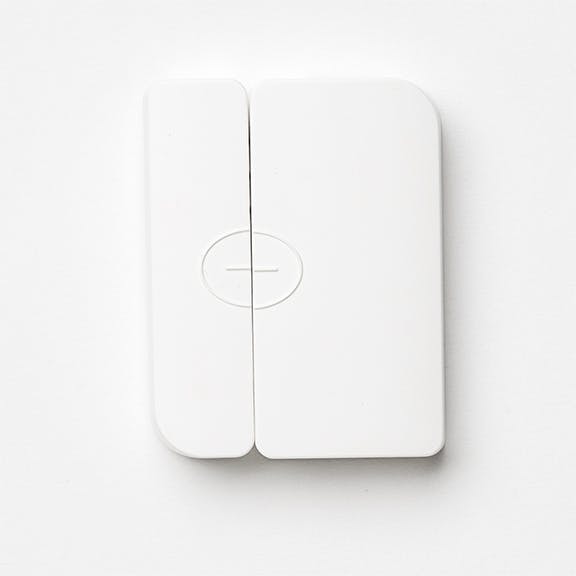
Securing the Windows With Window Sensors
When a burglar finds that the doors of the home are protected, they will move to the windows. Twenty-three percent of burglars will enter a home through a first-floor window. Those who choose to enter a home through the window will either break the window, pick the lock on the window, or find that the window was left open.
Since windows are a main entry point for burglars, it’s important that homeowners have a way to secure their windows. This is where the window sensor comes into play. There are two main types of window sensors: the two-part alarm and the glass break detector.
The two-part alarm is similar to the door sensor in that it determines when a window is opened. It also uses two sections (one attached to the window and the other attached to the frame). When the window is closed, regardless of whether the window is locked or unlocked, the sensor will register that the window is close. After you arm your home security system, as soon as the window is opened more than one inch, the alarm will be triggered. Homeowners can choose whether they want the alarm to blare audibly or if they want the alarm to silently alert the alarm company.
The glass break sensor is another type of window sensor. The glass break sensor can be placed in a room, rather than directly on the glass of a window, meaning that it can monitor an entire room of windows all at the same time. The glass break sensor listens for the distinct frequency of glass breaking. When the sensor “hears” the glass break in a window, it sets off an alarm and alerts the alarm company of the situation.
Many homeowners choose to use both the two-part window alarm and the glass break detector to ensure that every entrance to the home is fully protected and secured.

Easy Protection With Indoor Security Cameras
Security cameras are the blood and bone of a home security system. They provide visual evidence and audible proof of the break-in and can even offer essential footage that will lead to new suspects in police investigations. Indoor security systems can be placed around the home in order to offer better home security.
Most home security systems allow homeowners to have up to eight separated indoor security cameras. If wireless, these cameras can be set up all over the home, providing a fool-proof shield that catches any and all intruders who attempt to walk through your home.
Indoor security cameras are motion-activated, meaning that they begin to record footage when a moving target is within 40 feet of the camera. Once the person is in the shot, the camera will record continuously until the person moves out of frame. This technique ensures that the homeowner saves energy (since the camera isn’t recording 24/7), while still capturing every important moment on footage. Some of the best security cameras have 180 degree camera lenses, meaning that the camera can record a wider picture. This helps to pick up a wider range of motion.
Most home security professionals recommend using a wireless indoor camera instead of a wired indoor camera. The debate, wired vs wireless, has been ongoing ever since wireless security systems stormed the security market in the 2010s. However, wireless systems offer many more advantages and less drawbacks than a wired system. Wireless indoor cameras are more efficient, easier to install, and more user-friendly.
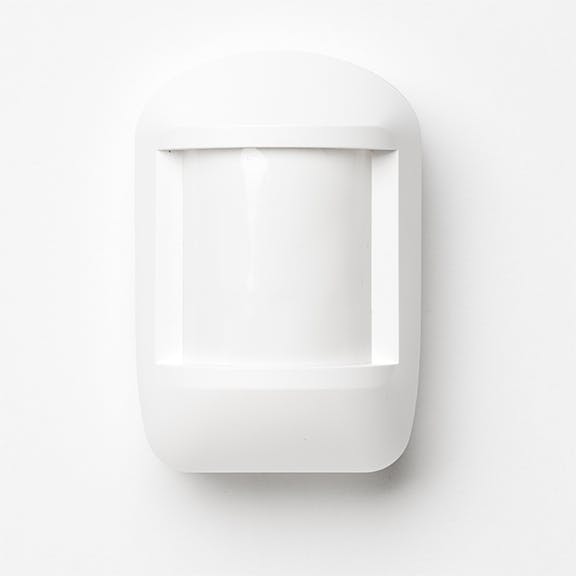
Backup Security With Motion Sensors
Motion sensors are another essential part of home security. If a burglar is able to get past the door alarm and window sensors, your next line of defense is the motion sensor. Motion sensors in home security systems typically use PIR motion detection. This type of motion detection picks up passive infrared radiation, which is natural radiation emitted from all living things in the form of heat. When the sensor picks up infrared radiation in a room, it tracks the body that is emitting the radiation. If the radiation is then sensed a short distance from the original place, the sensor knows that the body has moved. This triggers the alarm.
Motion sensors help to pick up anything that may have been missed by any of the other sensors in the home. For example, if a burglar was to climb through an expected window your motion sensor would still be able to pick up the activity. Since they are wireless, they can be moved and relocated to high traffic areas such as hallways, living rooms, and kitchens. Motion sensors help to add an additional layer of essential security to your home. Most home security systems will include motion sensors in order to offer you greater security.

Medical Safety With Medical Alert Buttons
Another device that is often included in home security systems is the medical alert button. Medical alert buttons are used for elderly people who live on their own (or who spend a good amount of their time on their own). A medical alert pendant is a small button that can be hung around your neck. If the elderly person falls and needs life-saving help, they can simply press the button and the pendant will call for help through the security system. You can also pre-set medical alert buttons to contact close relatives instead of emergency help.
Some medical alert buttons come with fall detection. Fall detection ensures that no matter what happens, even if the person isn’t able to press the button after a fall, help will be on their way. Medical alert buttons are best for those who:
- Are above the age of 60 and live alone.
- Are worried about their personal wellbeing.
- Require additional living assistance.
- Have a history of falling.
- Feel unsteady on their feet.
- Have loved ones who worry about their safety.
Medical alert buttons are life-saving devices that are often included in your home security package. Medical alert buttons are paired with home security systems in order to give homeowners a complete home security experience.
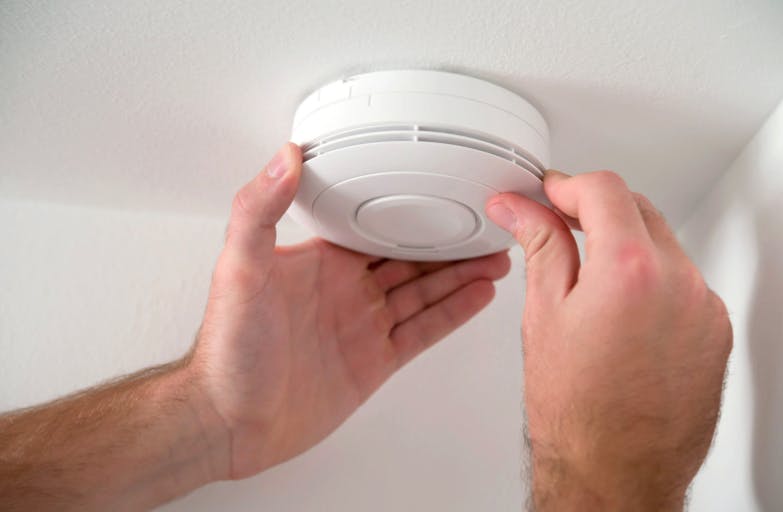
Safer With Smart Fire/Carbon Monoxide Detectors
We mentioned smart fire detectors briefly earlier in this article. Smart fire detectors and smart carbon monoxide detectors are life saving devices that save thousands of homes every year. They are connected to the home security system and communicate with the homeowner through the home security alarm panel. Fire sensors can alert homeowners that there is a fire in the home even while the homeowners are on vacation. This increases the likelihood that fires can be caught and stopped before anything is permanently damaged.
Smart carbon monoxide detectors are equally as important. Carbon monoxide is called “the silent killer.” It is an odorless, colorless gas that is deadly to humans. The gas is emitted from faulty fuel-burning appliances, such as stoves, fireplaces, and space heaters. The gas will silently fill a home, replacing the oxygen in the rooms. Every year 20,000 to 30,000 people are hospitalized due to carbon monoxide poisoning and 500 people are killed. A smart carbon monoxide detector can sense the gas faster and alert the family to vacate the home before symptoms of carbon monoxide poisoning appear.
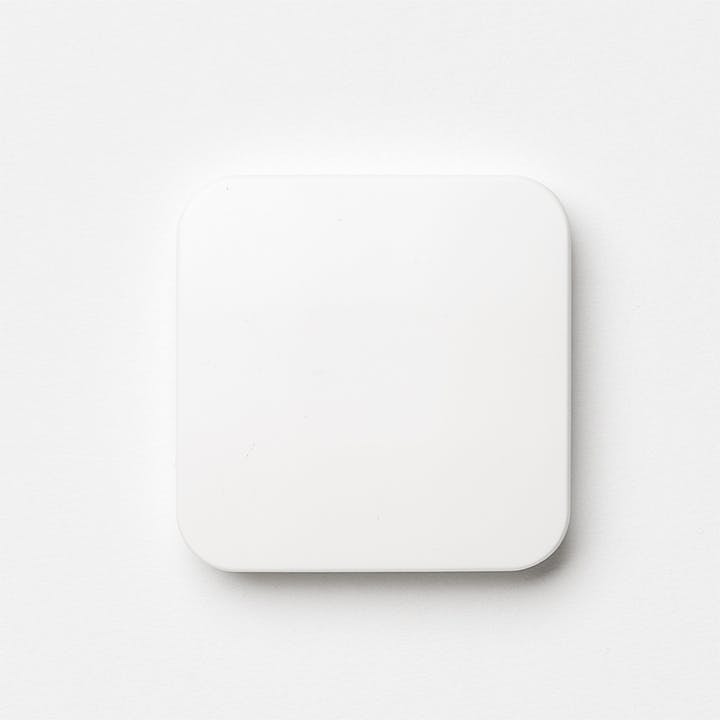
Water Damage Protection With Flood Sensors
Flood sensors help homeowners to prevent severe damage caused by flooding in the home. Floods are unpredictable and can be caused by a storm or pipe failure. Flood sensors ensure that homeowners are aware of the rising flood water when the water is still only a puddle on the ground.
Flood sensors should be placed near water-carrying appliances such as water heaters, pipes, and washing machines. Depending on the severity of the flood, water can quickly fill a room and damage electrical appliances, furniture, and flooring. Water can also cause mildew and mold to grow and fester in unreachable parts of the house, contaminating the air with sickening spores. Flood sensors help homeowners to notice the problem before the water seeps into the floors and walls and causes severe damages.
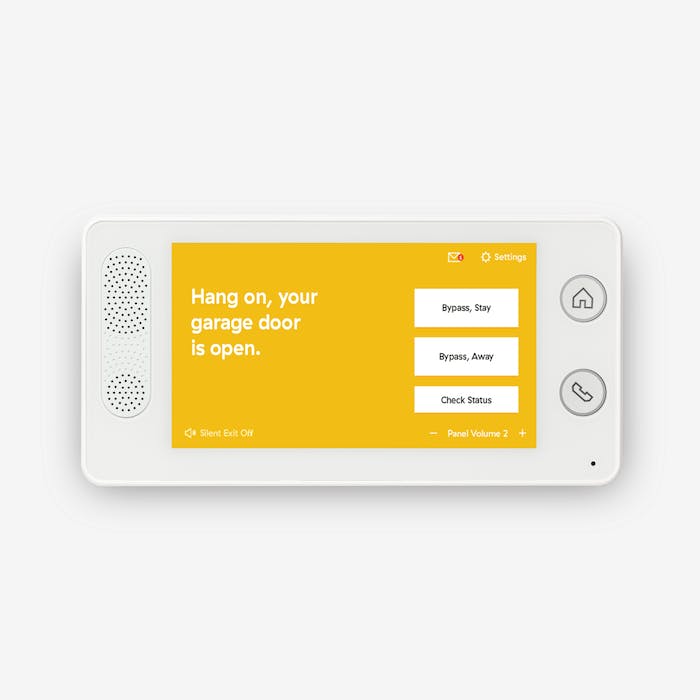
Complete Security With the Alarm Panel
Alarm panels are the master of all devices. From the alarm panel, you will have control over all of the other devices. Each device in your home security package will be able to connect to your control panel. Through the alarm panel, you can arm or disarm the system as a whole. Some alarm panels, such as the Cove Security Touch Panel, are tamper-proof, meaning that a burglar will be unable to disarm the system without using your secure, personalized security code.
Alarm panels make it easier to have a home security system since everything is connected. Alarms panels are the local monitoring center of your entire home security system. Homeowners that have an alarm panel controlling their security systems often remark that the process is easier, and that they enjoy their system more than those who don’t have an alarm panel. Smart systems will send out an hourly “heartbeat” that runs a self-diagnostic to check the system and ensure that everything is working properly. A home security alarm panel is the brain and the heart of the security system.
Some alarm panels offer different features such as “Arm Stay” and “Arm Away.” The first feature, Arm Stay, arms several devices but disarms indoor motion sensors and other alarms that would interfere with daily life. Arm Away will fully arm the system and prepare the devices in the home for duty.
Alarm panels are also capable of sending out a personalized notification to the homeowner’s mobile device. This notification will provide the homeowner with updates and give the homeowner peace of mind while he or she is away from the house. With professional monitoring, a feature that often accompanies alarm panels, homeowners can rest easy knowing that their homes are being monitored by the security company through the alarm panel.

Price of a Home Security System
Home security systems can vary in price from 35 dollars to 100 dollars a month. For in-depth security, systems nearly break the bank. One of the best quality and lowest priced systems is from Cove Security.
Cove offers their systems for a fourth of the price of other security systems. Rather than demanding hundreds of dollars, the price for a complete system is just 15 dollars a month, with professional monitoring included. The security devices are high-quality, easy to use, and easy to set up. Cove’s security systems protect homes every hour of every day and there are no hidden fees and extra charges. Since Cove uses do-it-yourself security systems (DIY security systems), the installation is easy. The entire installation process should take no more than 10 minutes to set up and arm. And, the customer can control everything from the alarm panel base station.
Using a monitoring station, you can connect your phone, use professional monitoring, and set up an effective burglar alarm with the touch of a button on your phone. Best of all, you get all of this for a few dollars a month.
Cove Security is the best monitoring service for homeowners looking for easy, simple security.
Other Ways to Improve Your Home Security
Combining a home security system with other forms of security protection will ensure that you’re secured at all times. Alarm monitoring will always be the most effective option when it comes to protecting against burglars. But, if you’re looking for additional ways to improve your home security, keep reading.

Consider Owning a Dog
Dogs have proven to be effective against burglars because burglars are scared of dogs. Dogs can be threatening and intimidating, whether or not there’s any bite behind the bark. According to a survey conducted by an Idaho News Station, burglars avoid dogs. The news station asked 86 convicted burglars, “Did pets in the home, like a dog, make you think twice?” The response from one inmate was, “Dogs are a deal breaker for me. Big breeds, home protectors are the best to keep people out.” Although small dogs didn’t seem to have much of an impact on burglar’s confidence, medium and large breeds seem to scare away a majority of would-be intruders. If you’d like more info about guard dogs, check out our article here.
Protect your home and your property by letting your dog spend time outside in the yard. You can also enlist your dog in a guard dog class to teach your dog how to protect your property. Do not try to teach your dog to be aggressive. Guard dog skills should be taught by a professional. However, if you’re not a dog person or owning a dog isn’t an option, there are still plenty of other options to augment your home security.

Leave the Light On
The next thing you can do to make your home a better and more secure place is by keeping your porch light on at night. Although the benefits of light have been disputed over the years, a recent study conducted in New York proved that lights have a large impact on crime. The study was conducted by the New York City Police Department and followed two housing developments. In one neighbrohood, new outdoor lights were installed along the streets and houses. In the other, no new lights were installed. The police department followed the neighborhoods’ crime rates for 6 months. At the end of the 6 months, the study showed a 39 percent decrease in crime in the lit neighborhood.
Other studies, such as the peer-reviewed study by UNC Charlotte, declare that “alarms, outdoor cameras, outdoor lighting, and indications of neighborhood watch programs were effective deterrents.” Leaving a light on in the house, or the porch light on can discourage crime in your area.
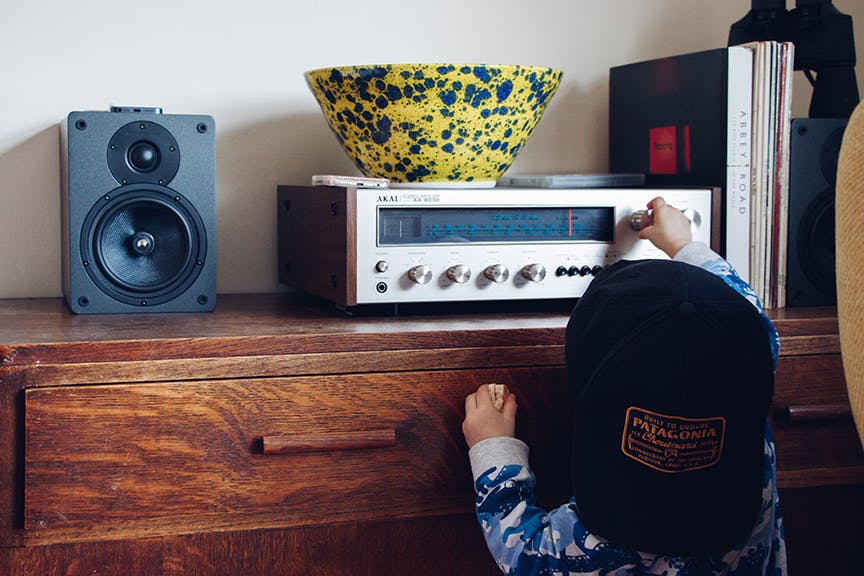
Listen to the Radio
Burglars will avoid entering a house when there’s someone inside already. Burglars are scared of getting caught and will do anything to not be seen. If the burglar thinks that there’s a chance that someone is home, they’ll turn around and target a different home. Some of the tell-tale signs of the homeowner are if the TV is on, someone is playing music, or if someone is listening to the radio.
Rather than entering the house, most burglars will turn around and try a different target if they suspect that someone is home. Before you leave your house, turn on the TV or the radio. Make sure the volume is high enough that you can hear the sound while on your doorstep, but quiet enough that it won’t disturb your next-door neighbor.
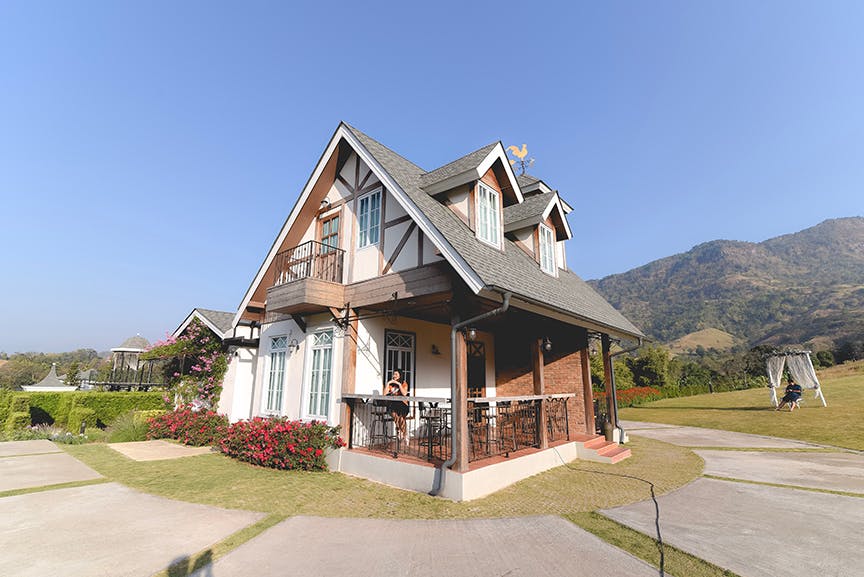
Update Your Landscaping
Landscaping can have a huge influence on your likelihood of being targeted. A burglar’s main goal is to get in and out of the house as quickly as possible without being seen. Homes that have untrimmed bushes or are obscured by trees and foliage are often targeted by burglars. Trees and bushes offer better coverage for burglars during the night and day. Intruders can hide behind a tree or duck into a bush when a neighbor walks by the house.
Changing your landscaping can help to prevent burglars from targeting your home. Make sure to keep trees and bushes trimmed and (if you can) away from entry points of the house. Trees should be at least 20 feet from the home and bushes should be at least five feet away. Messy landscaping may also hint to a burglar that the homeowners are rarely home, making the house an ideal target. Keep your landscaping fresh and trimmed and you’re less likely to be a target.
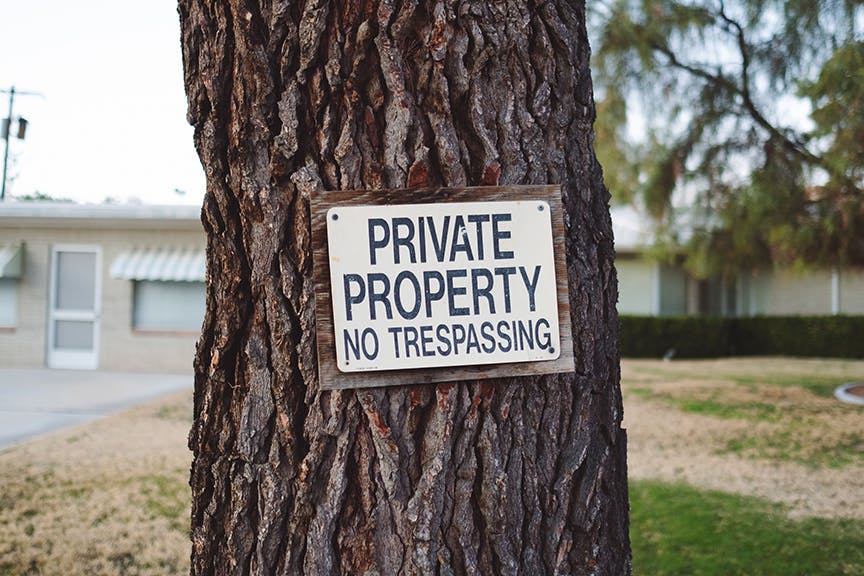
Use No-Trespassing Signs
One way to protect your property is by using no-trespassing signs. No-trespassing signs tell a potential intruder that the homeowner is prepared to prosecute. There is a psychological threat that intruders pick up when they see that the homeowner has gone through the effort of installing a no-trespassing sign. Homes with the signs are less likely to be targeted for burglaries.
If an intruder is found on a property that has clear no-trespassing” signs, the intruder can be easily prosecuted for trespassing. Legally, for an intruder to be prosecuted for trespassing on a person’s property, no-trespassing signs must be posted and visible at the entrance to the property. Once the no-trespassing sign is posted, the property is protected by law.

Start a Neighborhood Watch
Neighborhood watches can intimidate burglars and prevent them from targeting any of the houses in the neighborhood. According to the National Neighborhood Watch:
“A neighborhood watch program is a group of people living in the same area who want to make their neighborhood safer by working together and in conjunction with local law enforcement to reduce crime and improve their quality of life.”
Neighborhood watches are self-formed, meaning that homeowners simply need to band together to start the program. A neighborhood watch will have regular meetings, continued communication, and contact with the local police department. The community will stay in close contact with the police in the area, and the police will work to better learn the needs of the community. This relationship helps the police by reducing crime and helps the neighborhood by making members of the community feel safer and more secure.
“Burglarize” Yourself
Nearly every home has weak spots. You may have a window on the first floor with a broken lock, or a set of french doors leading into your backyard. To ensure that your home is completely protected, burglarize yourself. Attempt to get into the house without triggering an alarm or being seen by another family member. If you’re able to find an easy entry point, fix it.
Your goal, when burglarizing yourself, is to find the weakest parts of your home security and fix it. By the end, you should have a burglar-proof home with no weak entry points.
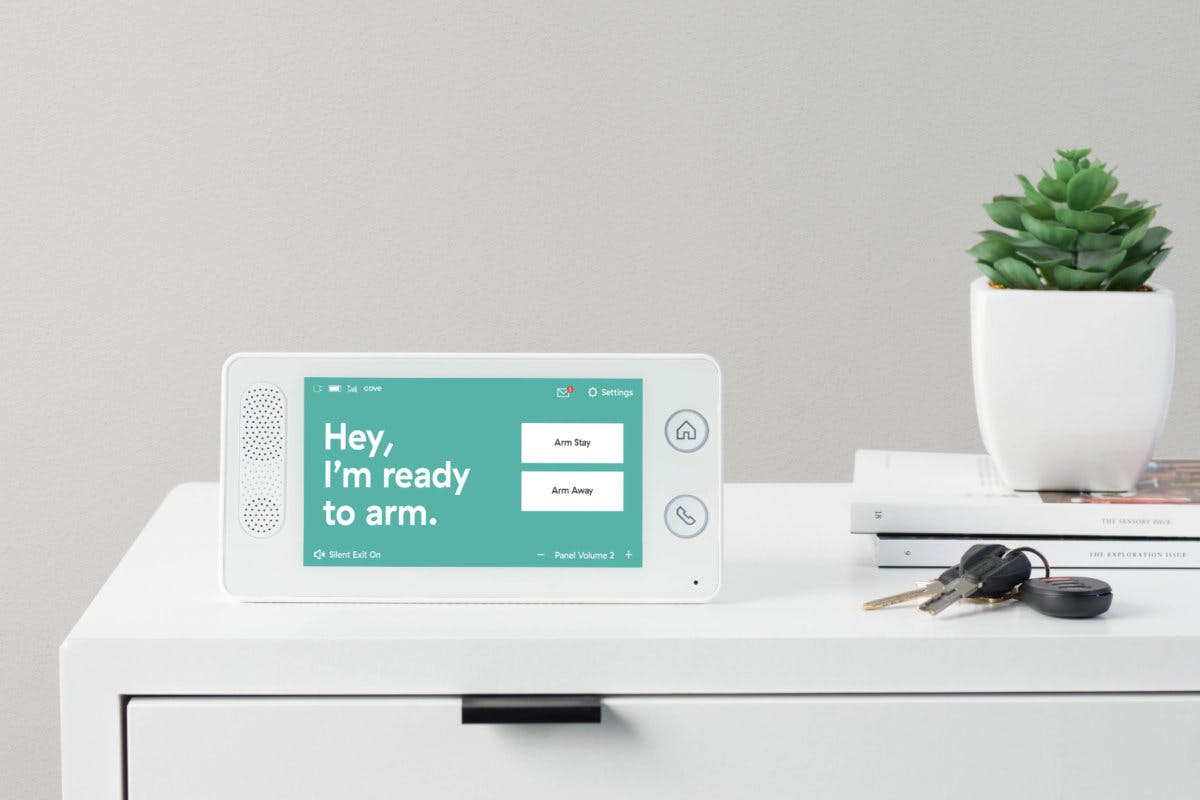
Combine DIY Security Tips With DIY Security
DIY security tips—including owning a dog, leaving the lights on, and updating your landscaping—are all helpful in preventing crime in your area. However, using DIY security tips without home security will still leave your home at risk.
The best way to protect your home is by combining home security tips with a home security system. Some home security tips will help homeowners to make their home less of a target; home security tips will not, unfortunately, protect your home. They are meant to be camouflage in order to make your home better blend in with other non-target homes.
A home security system is an active defense against intruders. It has the ability to scare intruders away, alert the local authorities, and alert the homeowners.
So, to answer the question: “Are home security systems worth it?” Yes. Home security systems are worth it, especially when comparing the benefits to the small cost of a home security system like Cove’s. When using a system like Cove Security, you gain all of the benefits of a home security system (24/7 professional monitoring, high quality security devices, and anti-theft monitoring systems) without paying the steep price.
Home security systems are an essential part of having a secure home. Home security systems make homeowners and their families feel safer at night and grant peace of mind.
